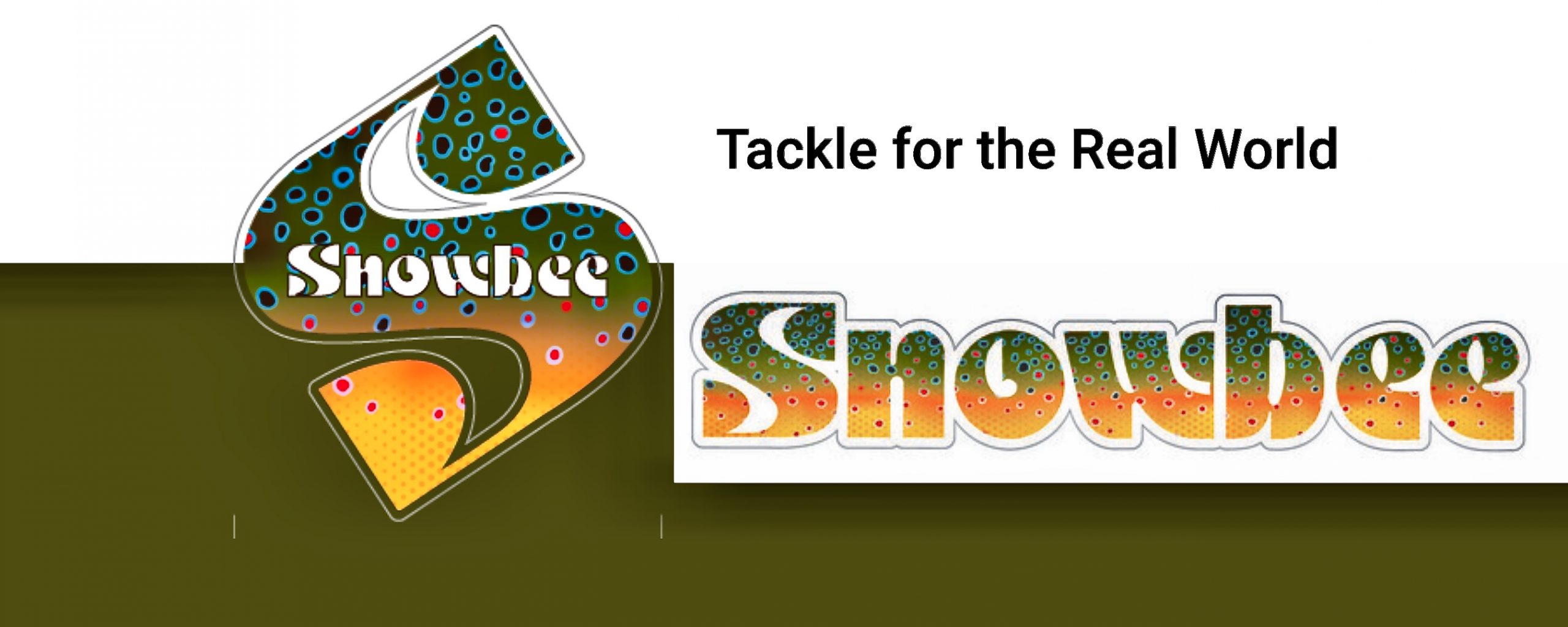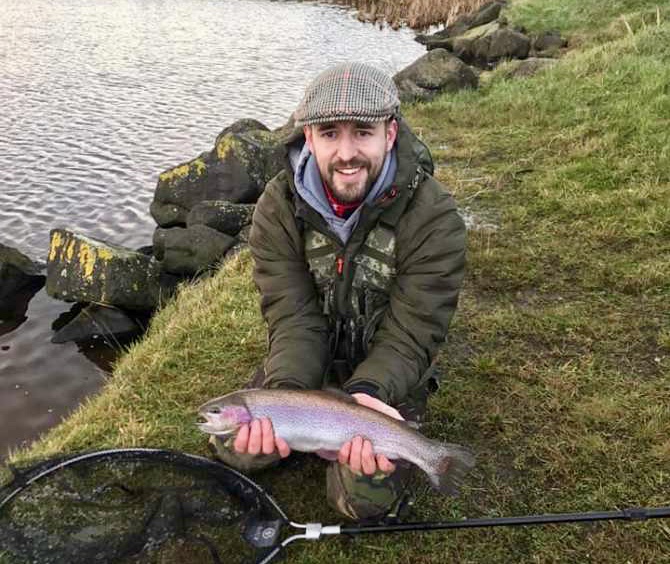Snowbee Nivalis review by The Naked Fly Fisher
I vividly remember winter 2001 as an adolescent youth for a variety of reasons that I cannot write, but in relation to the story, it was one of the harshest winters that I could remember. We went to our local fishing shop, which was perched in the back end of nowhere and rushed in to shelter from the lashing rain. After half an hour of browsing flies and looking at stuff we would only be able to afford once we had grown up, we left the shop and the car was surprisingly almost 6 inches deep in snow! As we got home, we excitedly wrapped up in layers and sprinted to the junction at the bottom of our estate to watch the vehicles, braking and sliding down hill into one another. The snow was over knee deep and as we ambushed passers-by with a few snowballs, had a few snow fights with the other kids in the estate, we were waterlogged and the clothes were on the radiator and hot-press for few hours until we could go out again.
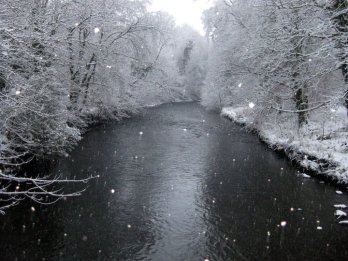
I particularly remember my nylon lined puffer jacket, that was supposed to keep me warm, becoming a giant sponge. Unfortunately no amount of radiator and hot-press time could dry it out in a few hours and as a result my teenage act of defiance, I would be wearing it as it remained wet. While my grandmother was concerned I would catch my death, my grandfather decided to give me some words of wisdom. After practically living with my grandparents growing up, I learned a lot from my grandfather. His little anecdotal survival guides which he based on his own life experiences, were often far-fetched and humorous and rather than take in the points he was trying to make, I would often wonder what percentages of the story were fact and fiction.
Taking a walk around the knee-deep snow, along the riverbank in Muckamore, reminiscing as we went along, he decided to tell me the importance of staying fashionable and warm in winter. He noticed my wet coat and noticed me shivering. “Always invest in a good coat son. You know… in my day, in a houseful of kids, we were so poor that the first out of bed was the best dressed, and in winter, they were the warmest!”
I chuckled because he probably was telling an extended version of the truth and delivered with such a straight face. But as he puffed on his rolled up cigarette, he elaborated further with that mischievous glint in his eye, “It used to get so cold in our house in winter that we would just huddle round the fire. If it got really cold, my dad would light it!”

Deciding on the Snowbee Nivalis
That was my lesson in keeping warm in winter and I always had my eye on the market for a down jacket, but what was the point in investing heavily in one if it wasn’t even the slightest bit waterproof? They were expensive and once the down became wet, they were about as much use as an ashtray on a motorbike.
I kept an eye on the market and I’m sure that I’d spent a number of evenings every Autumn, trying to pick something that would keep me toasted and keep me dry. There was always a catch. These coats were more than often permeable and susceptible to the rain. More a walking jacket than anything.

Last winter, I saw the Nivalis on the Snowbee social media site. It looked unique and a few magazines were raving about it’s capabilities. At the time I was reading them, we were under a few feet of snow and i decided that the following winter (this one), I’d see what the fuss was all about.
In one of my first conversations with Snowbee about the Nivalis, I asked if there were any known issues. “It’s too warm!” was not the answer I was expecting, but one that raised a smile nonetheless.
Snowbee Nivalis
What does the name mean to you? For me nothing. But my curiosity peaked and there had to be meaning, a quick google search told me that Nivalis is latin for Snow! Once I discovered this, I was glad they hadn’t added ‘Apis’ which is the latin word for bee!
All jokes aside, the name told me enough before I even got to the specifics. It was a coat developed to brave the colder climes, which we see all too often in the UK.
What i did know was that the coat had recently won the Best Clothing Award at the European Fishing Tackle Trade Exhibition (EFTTEX) in Amsterdam for 2018.

What’s in the price?
– Natural down filling consisting of 90% duck down and 10% feathers.
– Waterproof membrane has a Hydrostatic Pressure resistance of 5000mm
-Wind resistant
– internal and external 3-layer laminated fabric = 6 layers of waterproof material!
– Internal down pockets with internal stitching. Double insulated and protected with double knitted Tricot, TPU waterproof membrane on both the inside and outside.
– Woven micro-fibre polyester fabric outer shell with DWR treatment.
– Superlight woven polyester lining, with peach skin finish.
– Waterproof hood
– 2 x zipped hand warmer pockets
– 2 x internal hem adjusters
A medium sized coat weighs 830g.
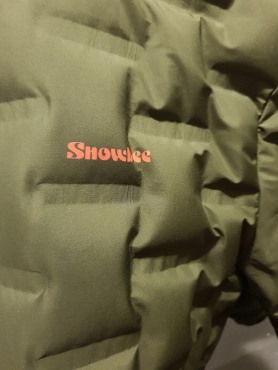
What did I just read???
With all products, come all levels of technical jargon. Duck down? Hydrostatic Pressure resistance? Tricot? TPU waterproof membrane? DWR treatment? It’s a lot to take in so maybe best to break it down some more.
Duck down: The key feature! The small under feathers, close to the chest of the bird and under the larger outer feathers. Very similar to cdc in appearance but considered the warmest for insulation, given the properties of the hollow feathers which trap air.
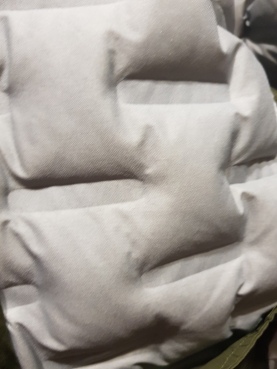
Hydrostatic Pressure: This is basically how many millimetres of water a coat can take in a 24 hour period, before it starts to leak water. Fabric is normally stretched tight and a vial of water is placed over the top. The level that water starts to penetrate gives the score.
To be considered waterproof in the UK, Hydrostatic Pressure must be over 1500mm which is better suited to light/average rainfall. The highest is 10,000mm which is suited for heavy rain and considered highly waterproof. By way of comparison the Nivalis is 5,000mm which is considered as very waterproof and will tolerate moderate to heavy rainfall. That means the Nivalis will take almost 5 metres of sustained rainfall before it will allow you to get wet!

Tricot: This is a smooth thin layer which of fine yarns which is often used in swimwear or sportswear, given their ability to stretch.
TPU: This stands for thermoplastic polyurethane and when combined with a fabric, can increase its ability to remain durable and waterproof. They allow a fabric to become resistant to abrasion, UV rays, chemicals and oils while retaining its original flexibility. A great trait for an outdoor coat!
DWR Treatment: Durable Water Repellancy Treatment. This is self-explanatory and is a protective coating added to aid a fabric’s ability to be classed as waterproof.
What do Snowbee say?
This is the bit I enjoy writing about. My past experience with Snowbee, taught me that they call a spade a spade and not a digging implement. They favour transparency within their thought process, a nothing to hide approach which sits very well with me.
“Our new Nivalis Down Jacket is without doubt, the most technical garment we have ever made! For many years, mountaineers and polar explorers have relied on the unparalleled lightweight insulation properties of natural feather down to keep them warm in extreme conditions. The problem, however, is that down loses most of its thermal properties as soon as it gets wet. Many manufacturers have tried to avoid this by either treating the outer shell with a DWR finish, or using feather down with a hydrophobic treatment to repel water and prevent clumping. Both methods have their limitations… so we thought why not put the down in totally waterproof pockets to protect it? Problem solved!” (Snowbee, 2018)
Brutally honest and a bit of insight into the shrewd corner (and probably cost) cutting that other manufacturers will go to before the product enters the market.
Testing and Results
As per previous blogs, how do you test a coat? If I run it under a tap, it wouldn’t give a fair reflection of rainfall intensity, given the intensity and volume of water. So once again, the tried and tested method of quite simply, wearing it to and from work for a few weeks, since almost 4 miles of my day would be walking to and from work in morning and evening. Thankfully during that period, we have had everything bar a standard summer clime! No hurricanes this time though!
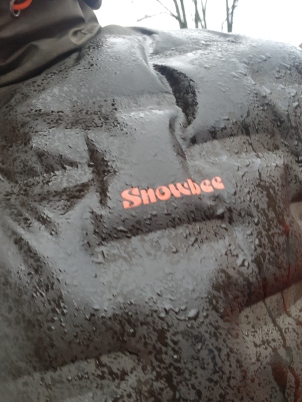
Water and drying
It’s fair to say the coat did appear to repel water and bead on the surface but in intense rainfall, would absorb water on the surface. That isn’t a bad thing as the down does not get wet at all and the proof is in the pudding on the next outing when the coat is still able to generate and retain body heat. Something standard down jackets don’t do after a good soak!
The key result is that water did not penetrate the inside of the coat at any time. One of the accidental discoveries I did make, was the ability of the coat to recover and dry out after a good soak. First time I noticed, was leaving my soaking coat on the coat rack to have to leave the house some 15 minutes later to find it was completely dry, not even damp on the surface! The other few times that this occurred, I made a note of the time and checked regularly to find that it went back to its normal state within 15-20 minutes. To put that into context, my trusty old nylon puffer jacket from my youth, would have had to spend nearly half a day or more to dry out!
Staying Warm
I can’t put it any better than this coat is warm! Think back to when Snowbee said it might be too warm, they are both right and wrong. A few words of warning, it is only too warm if you wear it indoors. Do not make the mistake I have made a few times! A trip to the shop or a short journey on public transport has nearly resulted in me passing out with the heat and coming home like a rabid dog! So if you think you are going to be indoors longer than outdoors, by all means go for a lighter coat, or layer up less otherwise you will suffer. Shopping can quickly become uncomfortable (as it normally is for us males!).

Do you need extra layers underneath? Again, yes and no. I can get by in a minus temperatures with a shirt, a thin layer and a hoodie and feel super snug. However in say 10 degrees, 1 layer is sufficient. Don’t be silly and wear a tee shirt and assume this coat will solve your problems. A lot of it is general common sense.
The hand warmer pockets are a lovely little addition. Like most coats, the pockets keep the hands to the outside of the insulated layers. This one keeps them underneath the down and warm quickly. Perfect, if you’re still prone to throwing the odd snowball.
Mobility
One of the key concerns from most anglers was that it appeared to be quite bulky. Would this restrict casting? The only way to find out was to wear it for a day’s fishing. Personally, I had no issues, I casted well and was able to land fish as normal. The only hitch would be if like me, you have a fishing vest/chest pack, it will become a bit tighter than normal and becomes a more awkward fit. By loosening the straps, I was able to overcome this hurdle but no issues that would impact my fishing.

Opinion:
Before I give my overall opinion, I will say it now… THIS IS THE BEST COAT THAT I HAVE EVER OWNED! I too can make bold statements and I am happy to stand over this one. I feel warm without the need to layer up like an onion. It feels like a comforting hug sometimes and i’m still undecided if that’s due to the warmth or the fit!
I have spent the best part of 18 years too-ing and fro-ing over coats. I’d make bold decisions based on price, fashion, heat, and impermeability. Every time i would make the sacrifice at the expense of heat and layer up instead. However, this is not always practical and my washing machine will agree with that. This time i feel i have a coat that gives me most of that.
I like the aesthetics, the shape, colour and all round design of the coat. It resembles a good fishing jacket/hiking jacket. It feels durable. I have worn it through dense briars and no visible plucks or holes. Though I don’t recommend taking it there. Ideally you want to minimise the risk of allowing water to permeate through to the down feathers.
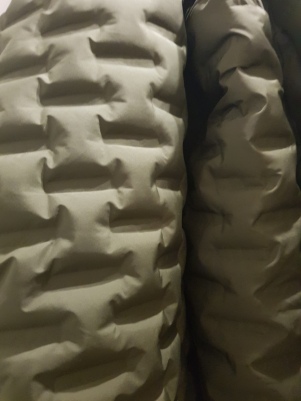
The coat comes with a hoodless option also. I am very grateful to have chosen one with a hood. Sometimes a hat just doesn’t cut it in the cold and it adds that extra layer of protection from the windchill, especially if you’re not fond of wearing a woolly scarf like me.
It’s not a coat that i am going to wear to somewhere fancy, it’s an outdoor coat, designed to protect from the elements. It does just that, and injects a good bit of warmth for good measure. Ultimately for me it is a fishing coat and is reflected with the internal deep pockets, perfect for a number of rogue flyboxes.
I am however gutted that the same level of warmth does not extend to my legs. It also irks me that come late spring, i will have to stop wearing it as the weather begins to warm slightly. In both cases these are of no fault of the coat!
As i have stated in other blogs, when buying a coat it’s important to know what you want within your price bracket. This coat will cost you around the £200+ mark and a lot of anglers will judge this coat on the price tag that comes with it. This is relatively unfair as there are brands that put their name on anything and will charge a premium price when the clothing offers no purpose other than a billboard to display their logo. In this case, you will pay a premium price and get exactly what it is you are looking for. For me it is a worthy investment if it offers a purpose. A statement that i also made in the Regal Vise Blog.

Cheaper coats will make you choose between staying warm and staying dry, but at this price the Snowbee Nivalis will let you have both. Some food for thought.
Snowbee boldly say they have been designing good waterproof clothing for over 30 years with a Keep It Simple approach. Ironically this is the least simple approach they have taken, yet is probably one of those products which will likely provide the blue print to waterproof down jackets in the near future.
Going back to what my grandfather said, about the first person up being the best dressed and the warmest, i know exactly what he meant as i put this on each morning.
To summarise: Warm, snug, toasty, comfortable, durable. It WILL keep you warm!
Where to buy :Available from Snowbee at £239 for a hooded version. There is a ladies fit at the same price. There is a new collar only version costing £229 but personally, you can’t beat a hood.
They are a reasonable fit. I was able to get my own size and it fitted as normal. So no need for a size up or a size down.

